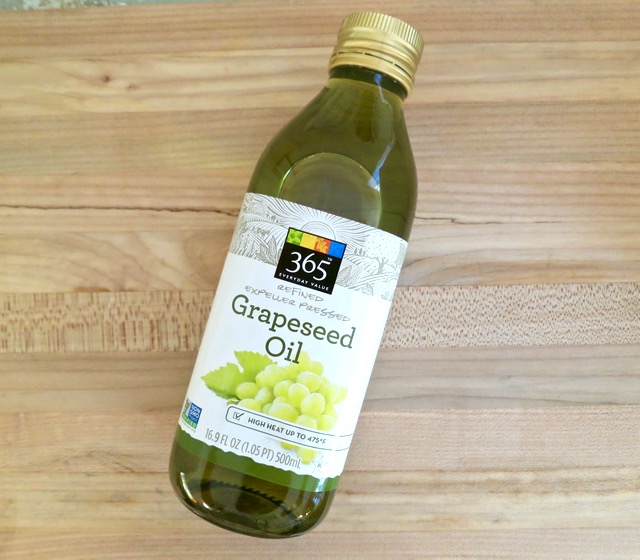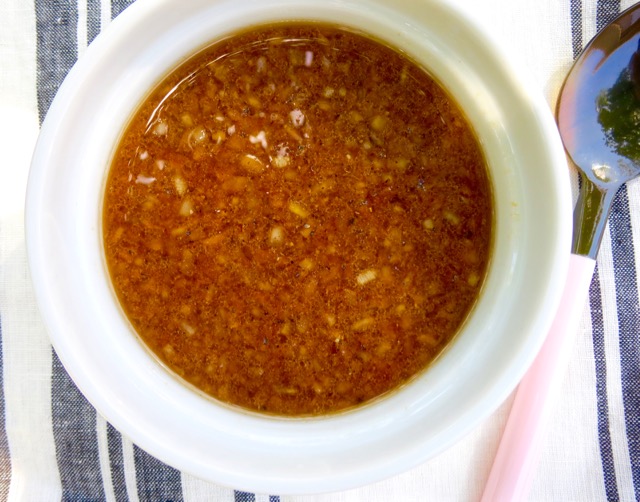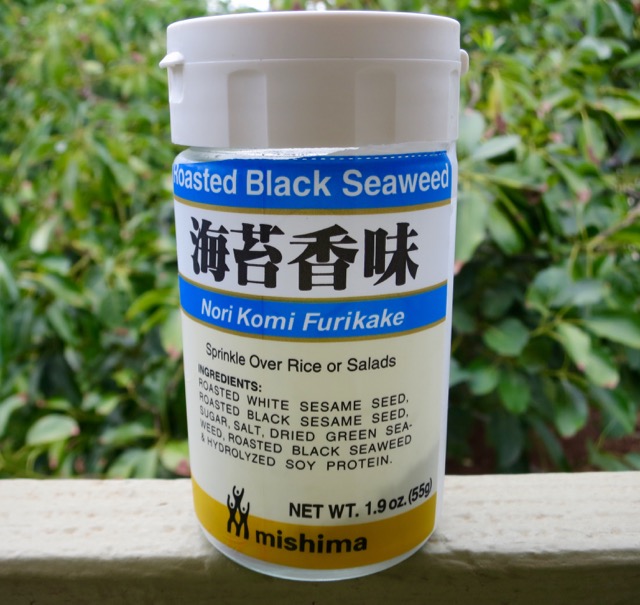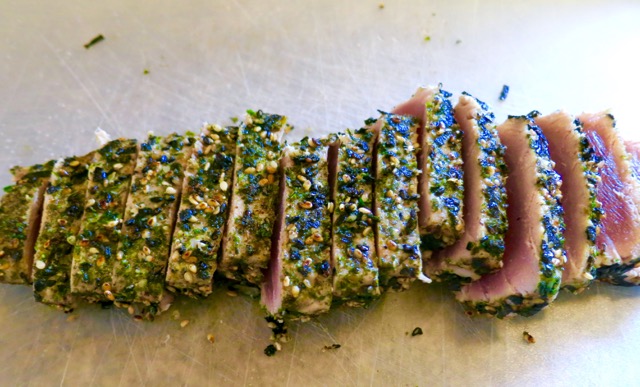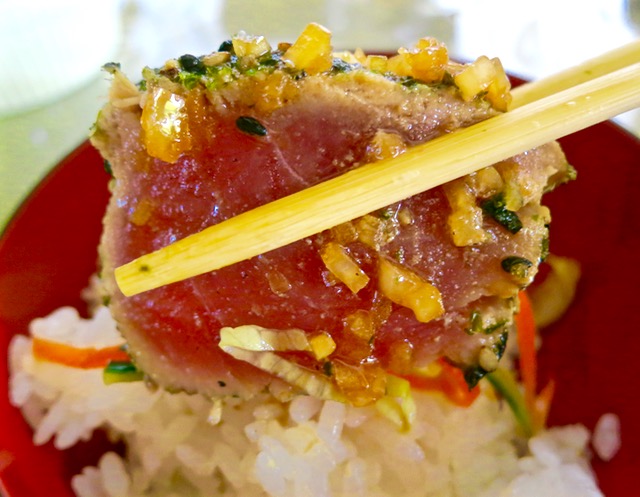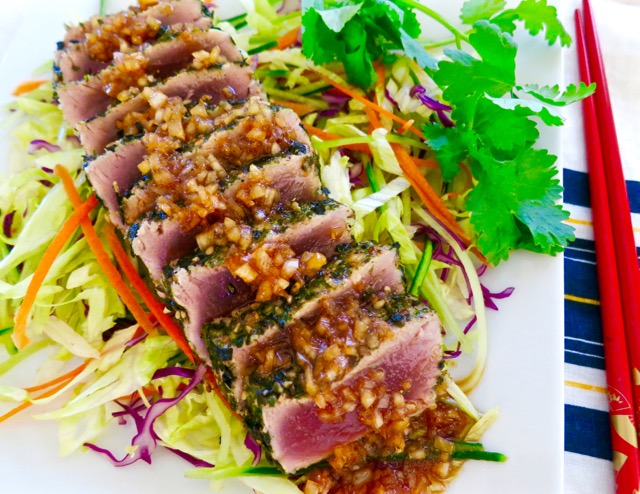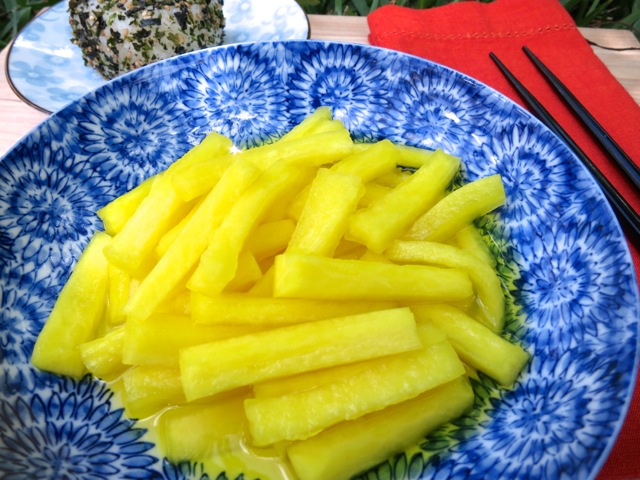 My friend Tomoe always has a treat to give me when I stop by now and then to deliver tomatoes or avocados from our garden. I never leave her home without a gift of her delicious mango bread, lilikoi jelly or in this case takuan. I have never thought of making takuan since I only eat it occasionally and it’s readily available in the markets here. After taking a jar of Tomoe’s homemade takuan home and tasting it, I decided it was about time to make my own. Her little yellow pickles were so tasty, crunchy, sweet and salty with just a hint of tartness (much superior to the commercial brands) and, oh so delicious with a bowl of steaming hot rice.
My friend Tomoe always has a treat to give me when I stop by now and then to deliver tomatoes or avocados from our garden. I never leave her home without a gift of her delicious mango bread, lilikoi jelly or in this case takuan. I have never thought of making takuan since I only eat it occasionally and it’s readily available in the markets here. After taking a jar of Tomoe’s homemade takuan home and tasting it, I decided it was about time to make my own. Her little yellow pickles were so tasty, crunchy, sweet and salty with just a hint of tartness (much superior to the commercial brands) and, oh so delicious with a bowl of steaming hot rice.
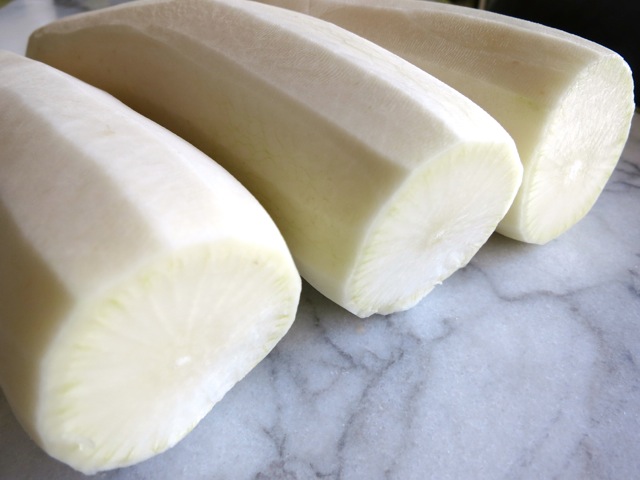 Daikon are not the most attractive vegetable. In fact, with their pale color and gangly shape, they are quite homely. However once you add a bit of seasoning to daikon, they transform into some of the best pickles you can imagine. A case in point is Vietnamese pickles (Do Chua). I adore these pickles piled high in a banh mi. Takuan pickles are delicious served as a side dish with rice and grilled fish, chicken or even tofu. In fact I enjoy just a bowl of hot rice and takuan.
Daikon are not the most attractive vegetable. In fact, with their pale color and gangly shape, they are quite homely. However once you add a bit of seasoning to daikon, they transform into some of the best pickles you can imagine. A case in point is Vietnamese pickles (Do Chua). I adore these pickles piled high in a banh mi. Takuan pickles are delicious served as a side dish with rice and grilled fish, chicken or even tofu. In fact I enjoy just a bowl of hot rice and takuan.
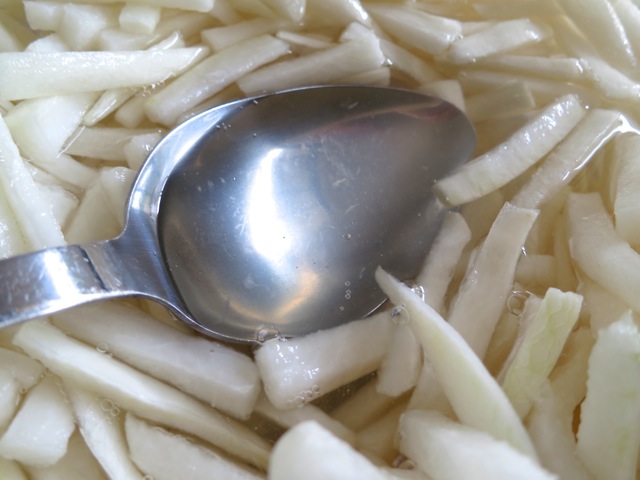 After mixing the daikon with sugar, let it sit for an hour or two. You’ll end up with quite a bit of liquid in the bowl.
After mixing the daikon with sugar, let it sit for an hour or two. You’ll end up with quite a bit of liquid in the bowl.
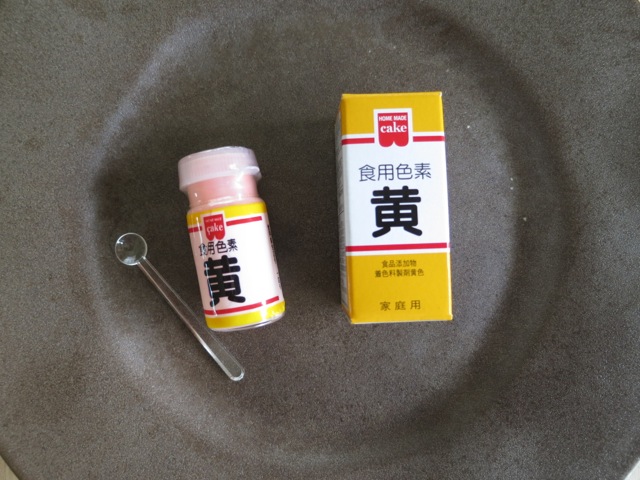 Though these pale radishes don’t need to be tinted a bright yellow, their color is actually part of their identity and what we grew up with. Tomoe goes to Japan every year and buys powdered coloring. I have no idea what the box says but it worked.
Though these pale radishes don’t need to be tinted a bright yellow, their color is actually part of their identity and what we grew up with. Tomoe goes to Japan every year and buys powdered coloring. I have no idea what the box says but it worked.
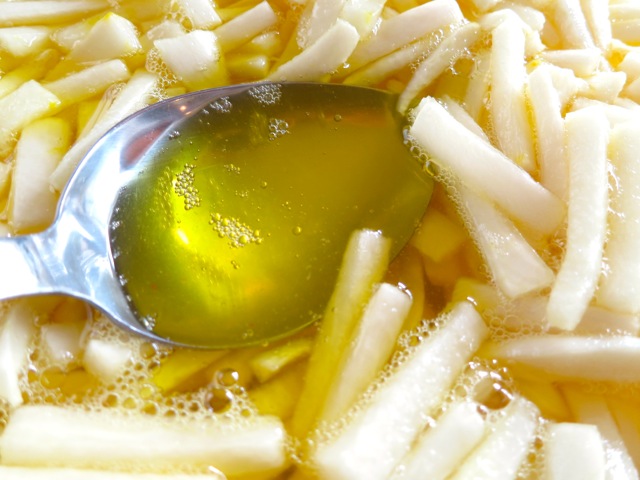 It takes about a week for the daikon to absorb the pretty yellow color and flavor of the brine. After 2 weeks the pickles are ready to eat.
It takes about a week for the daikon to absorb the pretty yellow color and flavor of the brine. After 2 weeks the pickles are ready to eat.
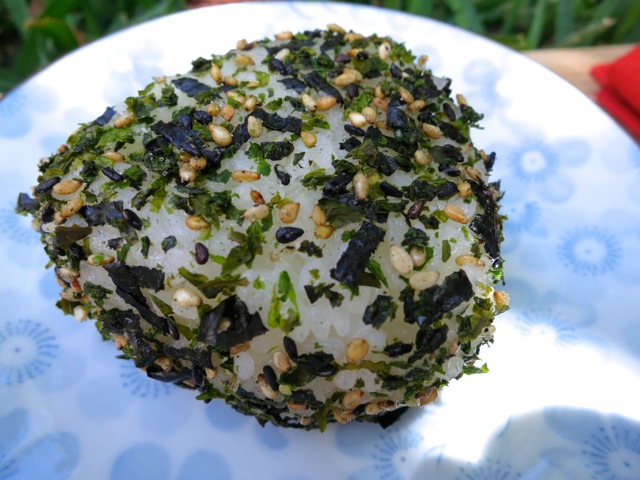 Onigiri goes hand in hand with takuan pickles!
Onigiri goes hand in hand with takuan pickles!
Homemade Takuan
Adapted from Tomoe’s recipe
Makes 2 quart jars
Ingredients
3 1/2 pounds long daikon
2 cups + 1 tablespoon sugar
1/4 cup Hawaiian sea salt (kosher or other coarse salt if Hawaiian sea salt is not available)
1/4 cup + 3 tablespoons rice vinegar
yellow food coloring
Preparation
Peel daikon and cut into 2 inch length pieces about 1/3 inch thick. Place in a large bowl and toss with sugar. Let stand for 1 – 2 hours, tossing occasionally. Do not discard liquid.
Add Hawaiian salt and rice vinegar to the bowl of daikon. Toss to coat well. Add yellow food coloring being very careful not to add too much. You can always add more if the color is not what you expected. Cover bowl well, and refrigerate for 2 weeks, tossing pickles every few days. The amount of liquid from the daikon will vary. Taste and adjust seasoning as needed. Transfer pickles to quart jars and cover tightly. Takuan pickles will last for months stored in the refrigerator.

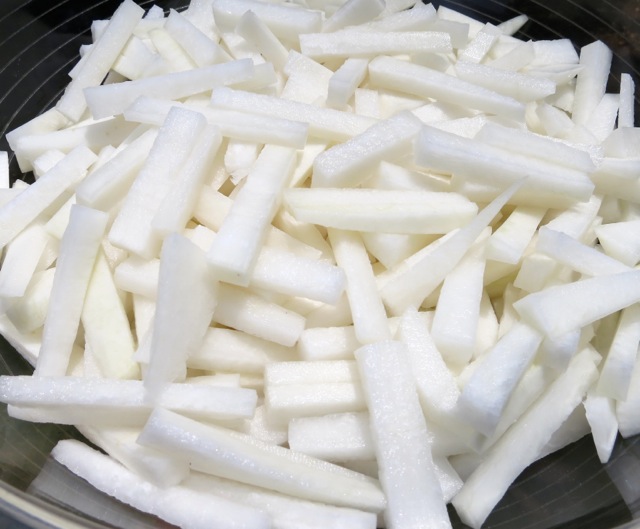

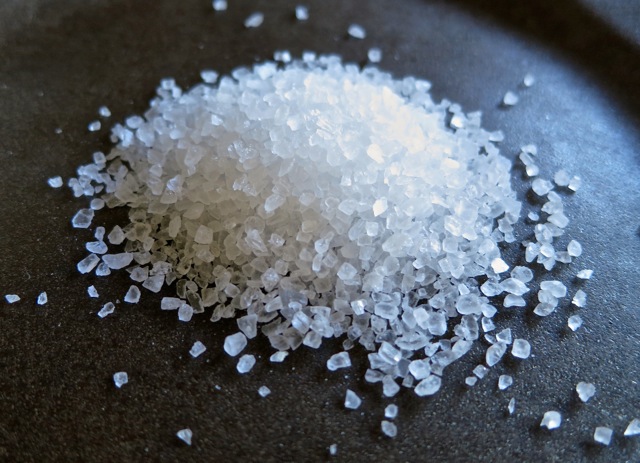
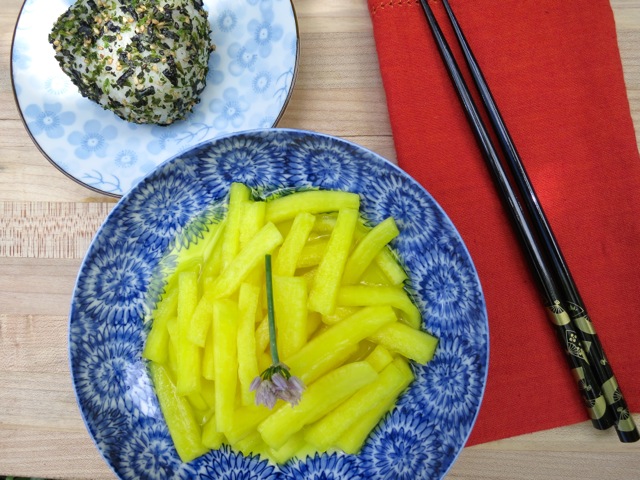
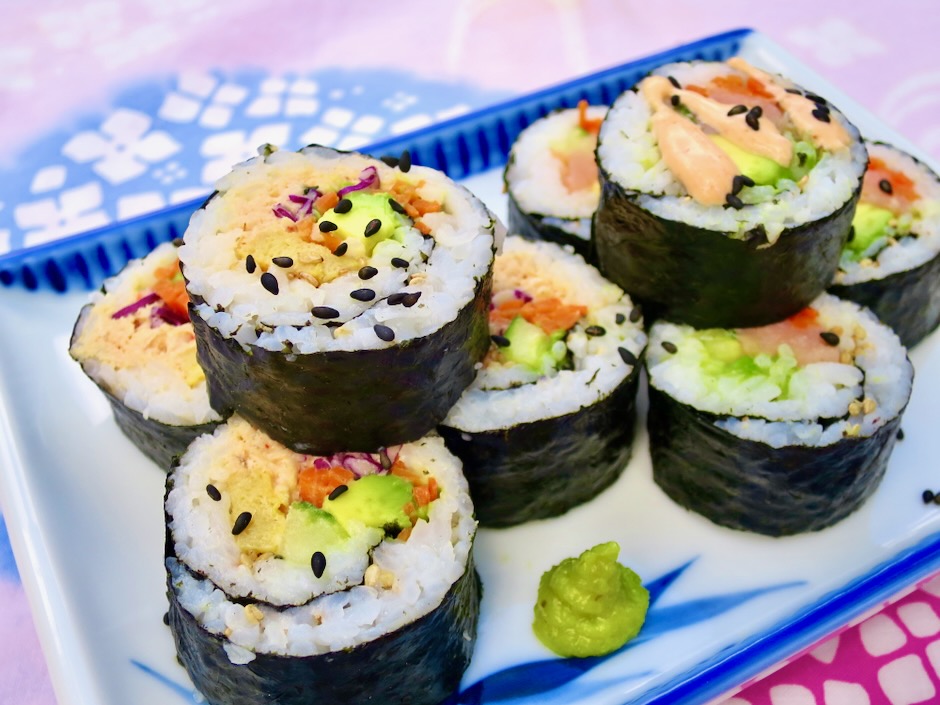
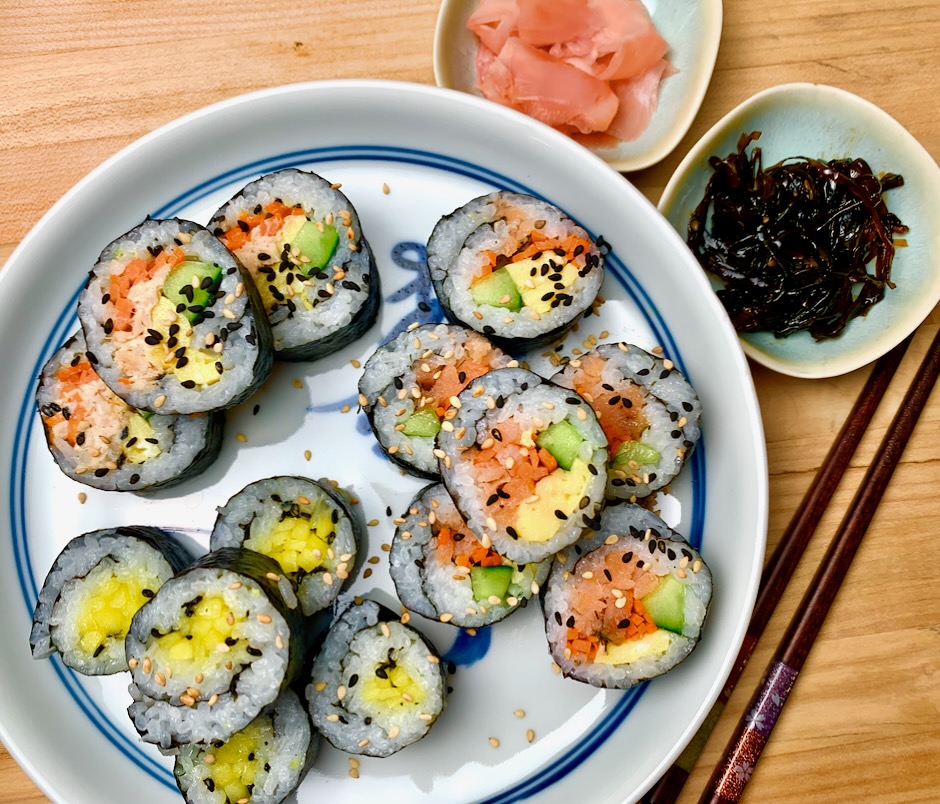
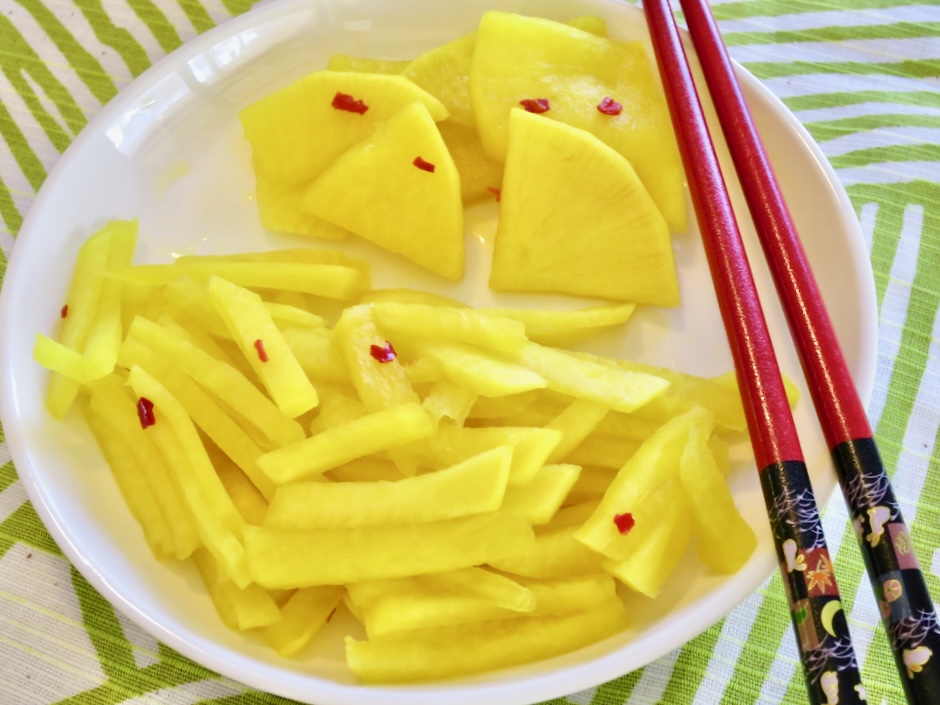
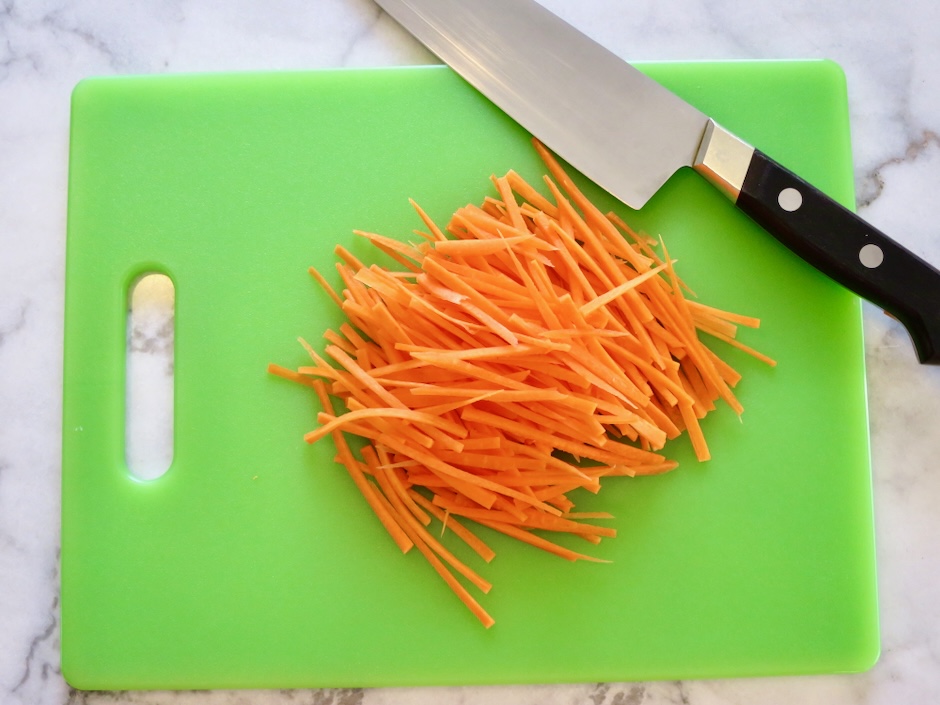
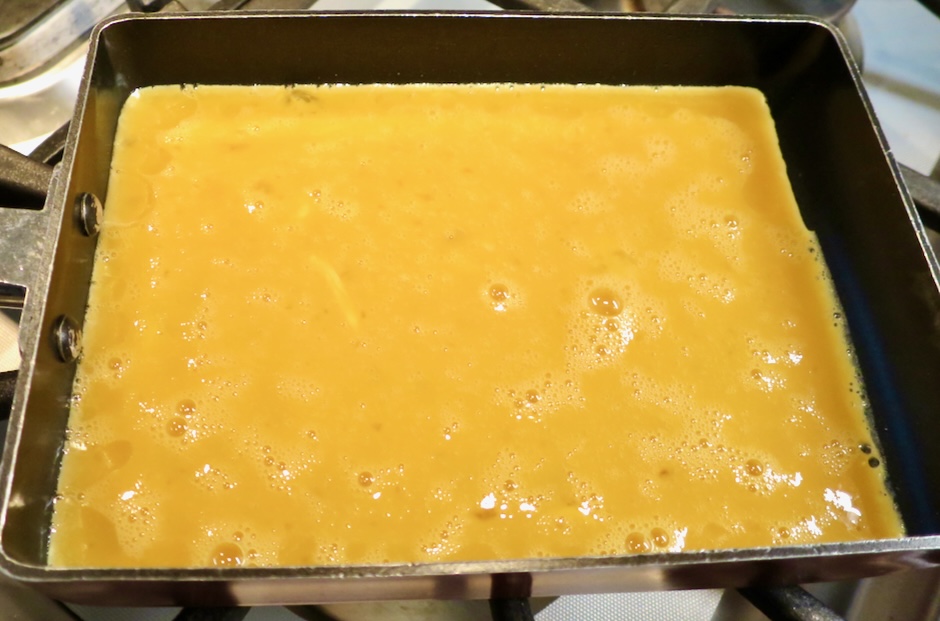
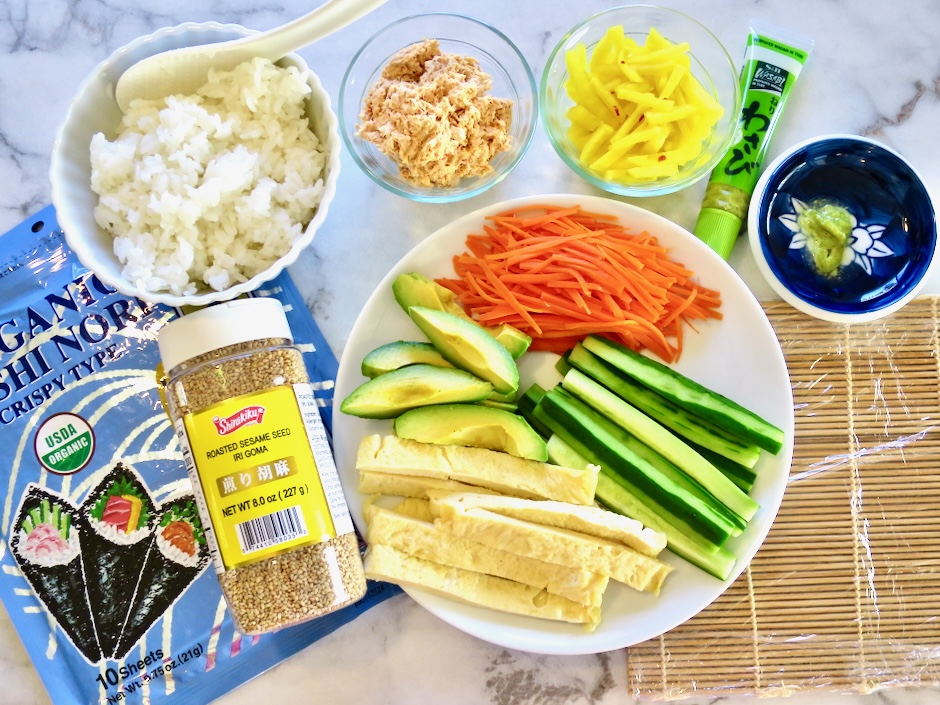
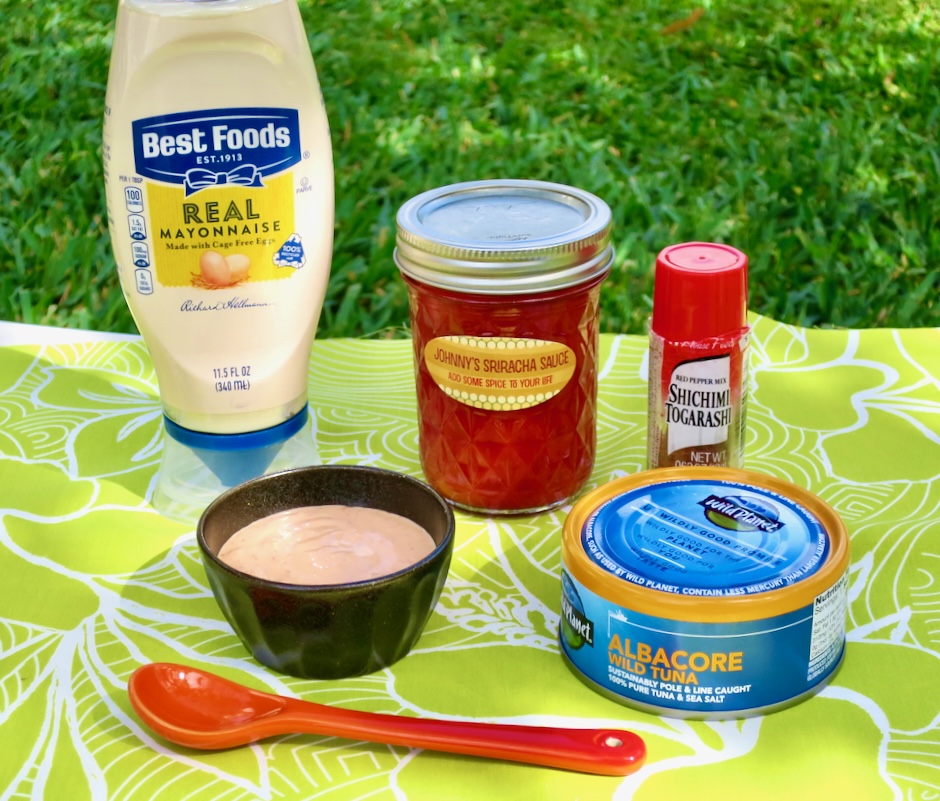
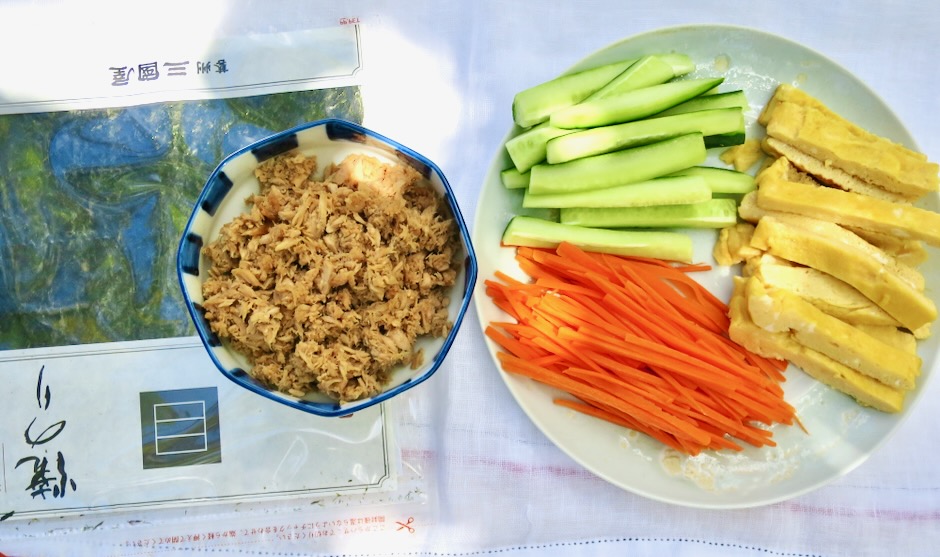
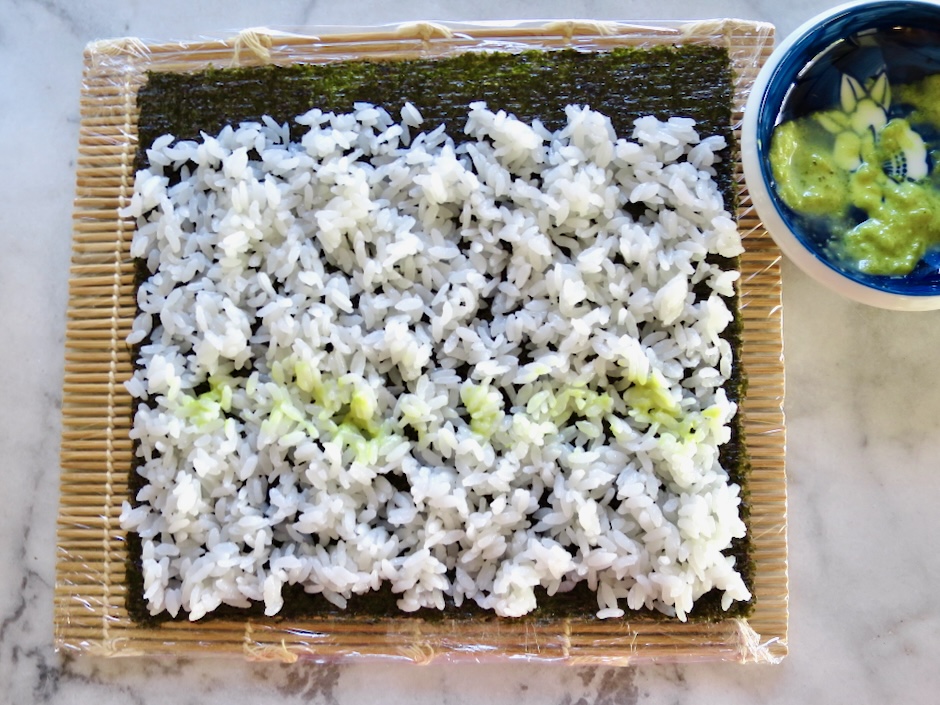
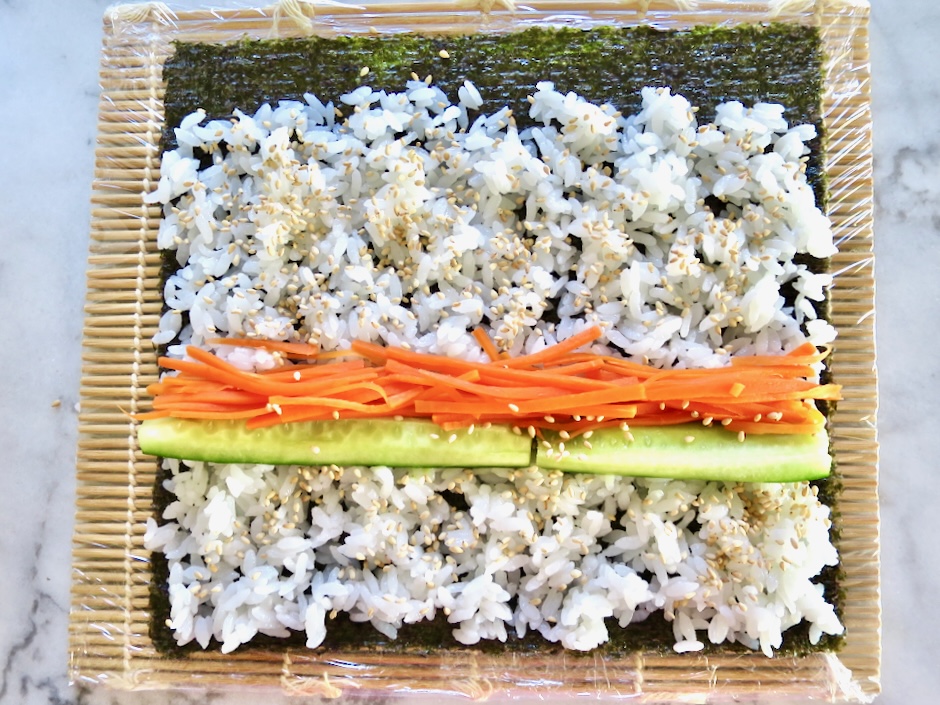
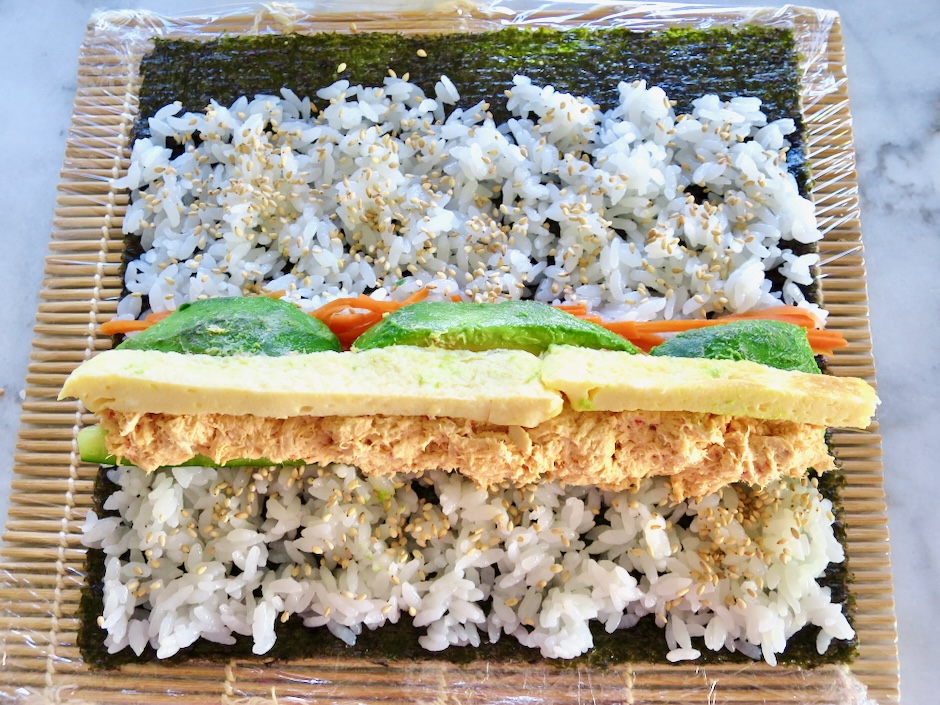
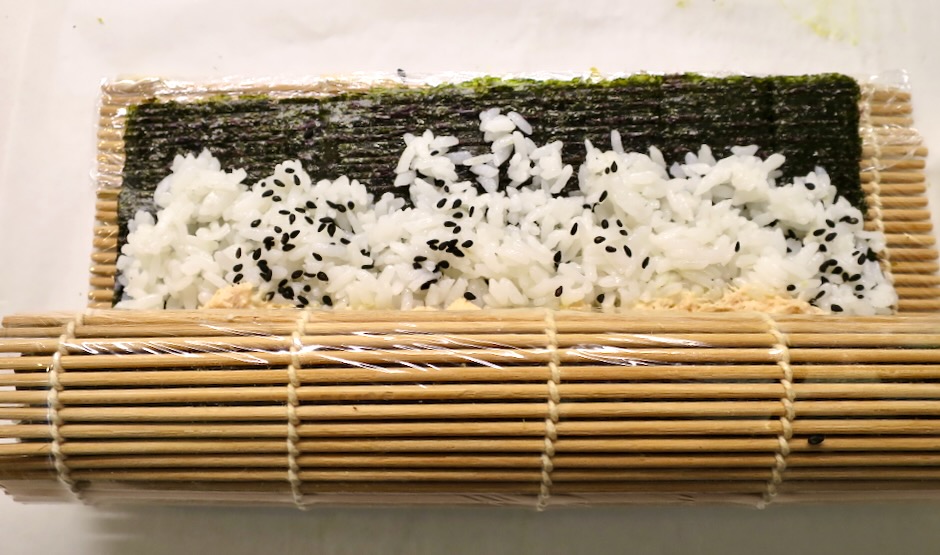
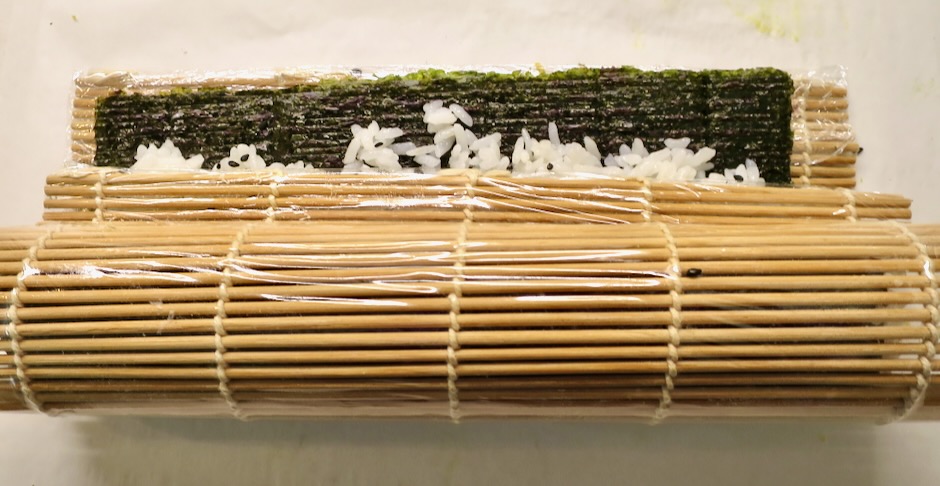
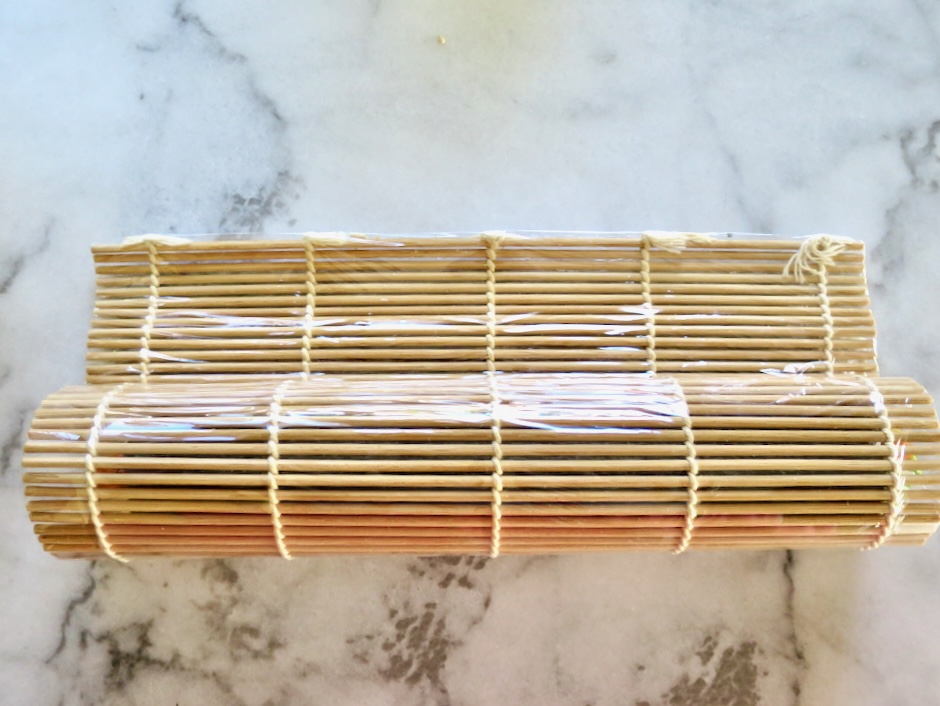
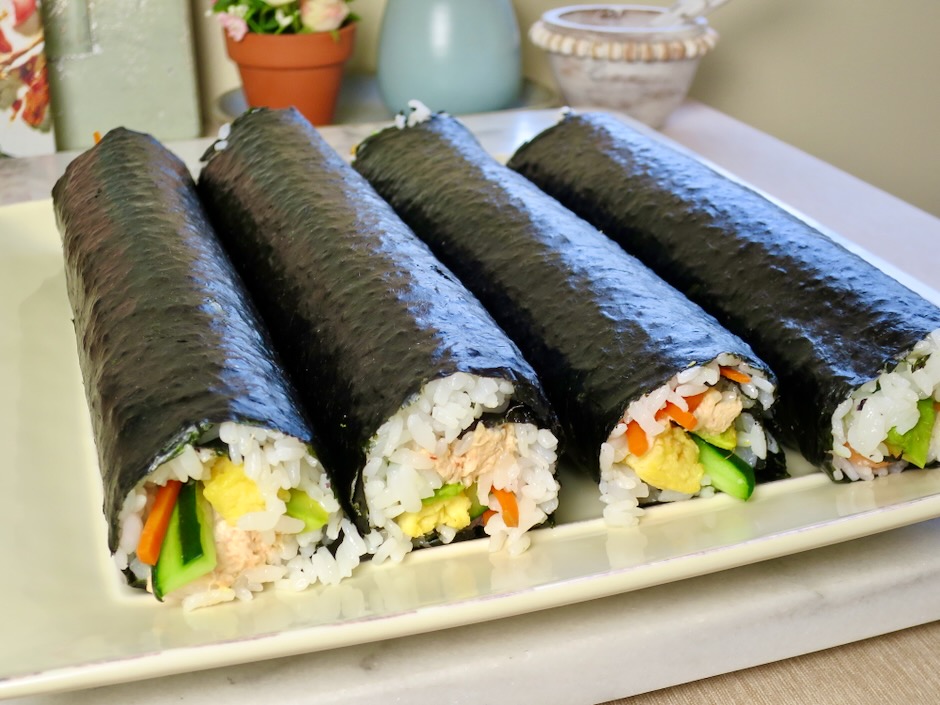
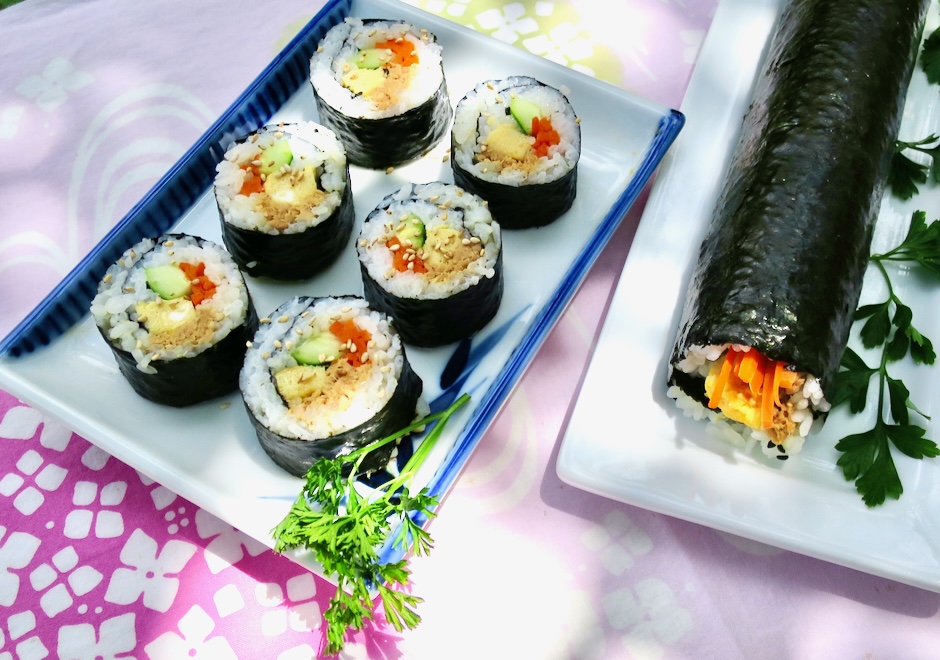
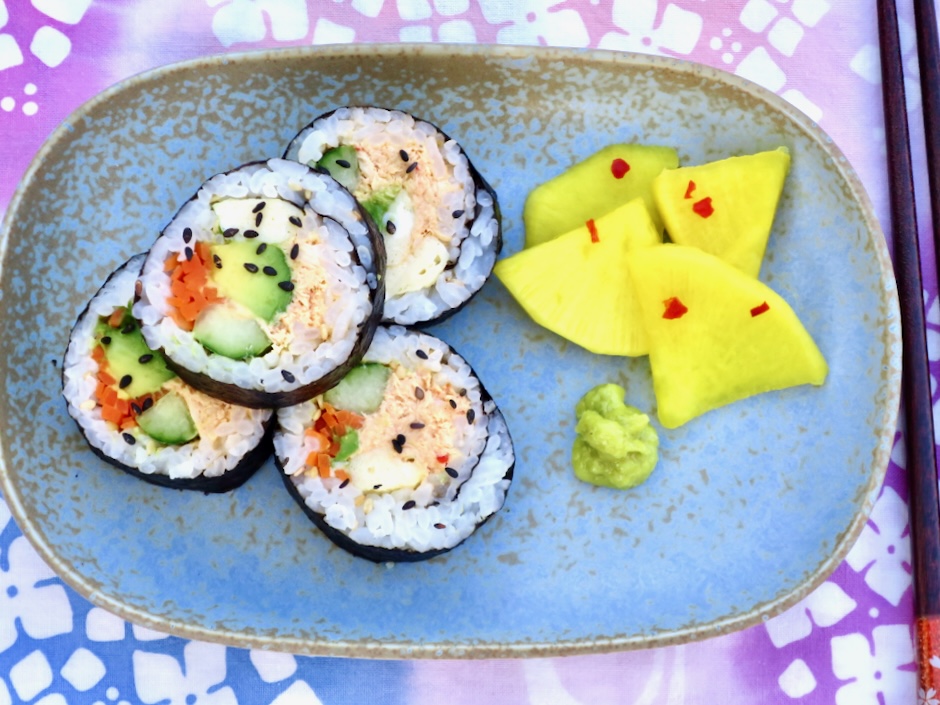
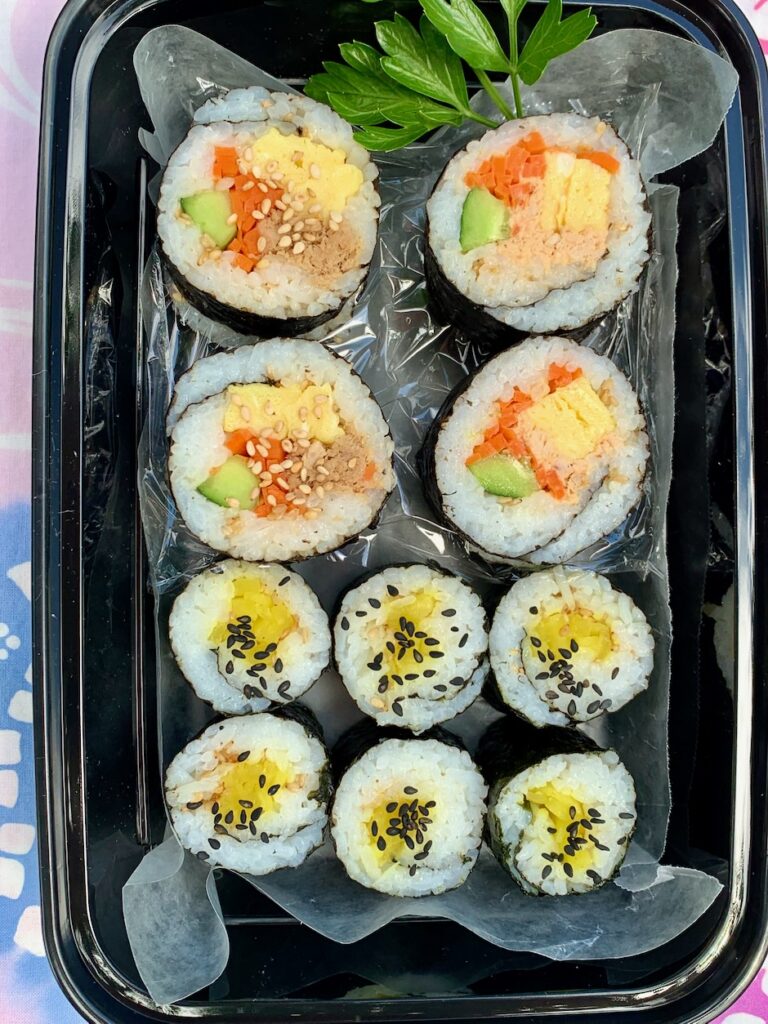
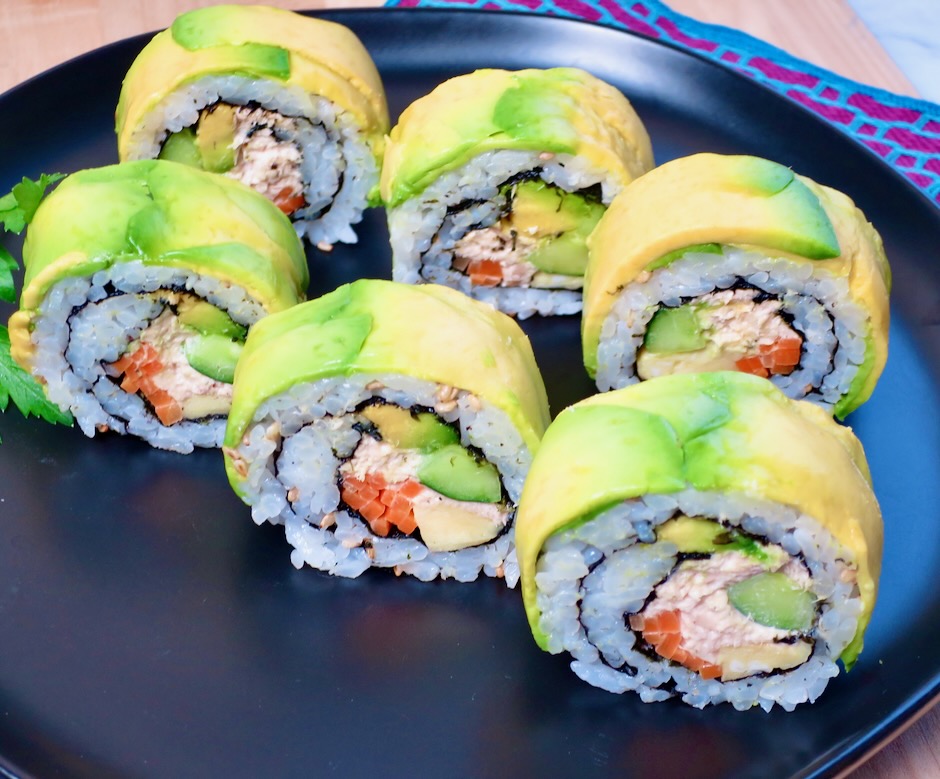
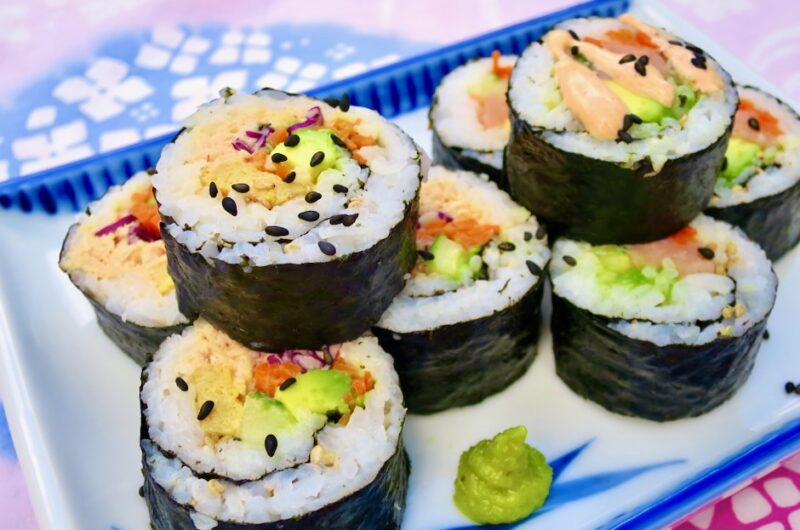
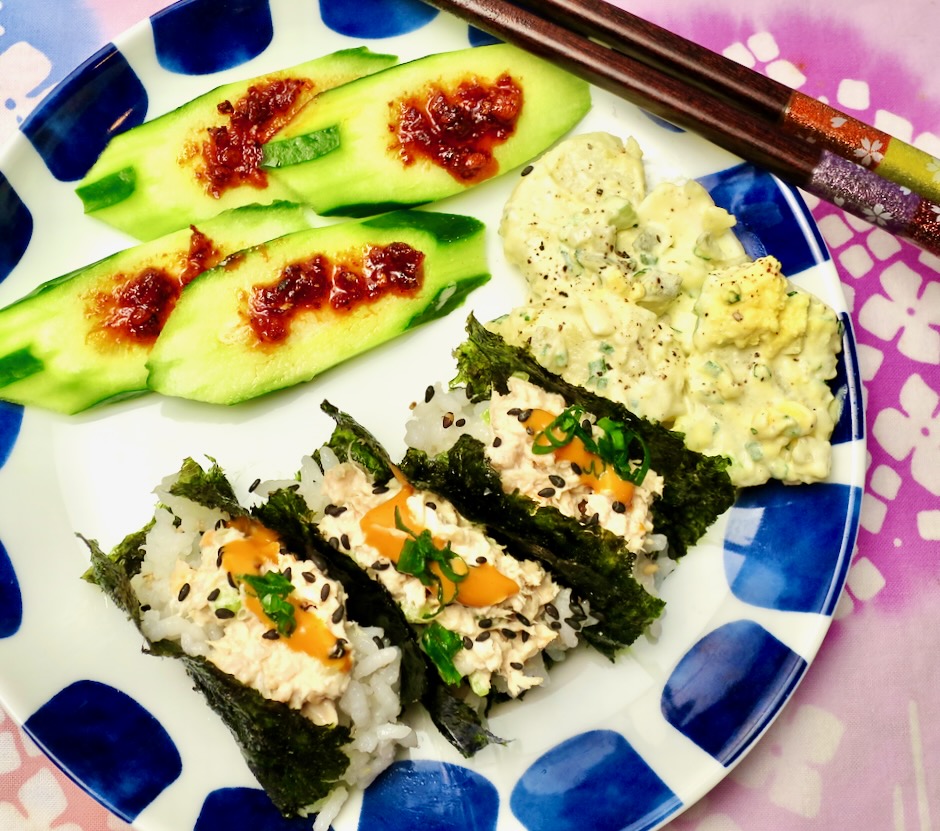
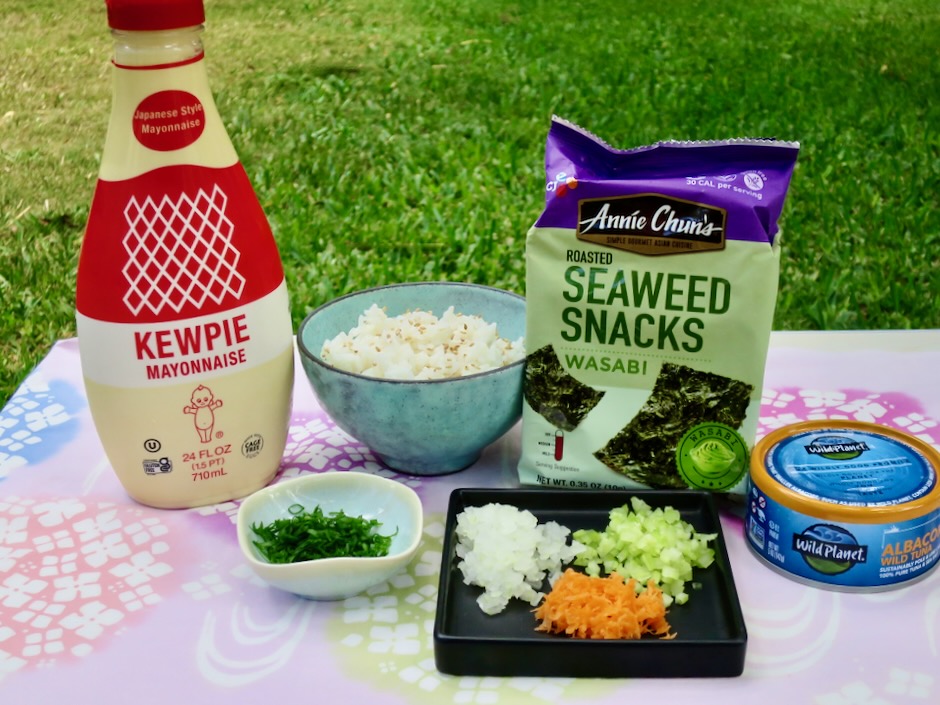
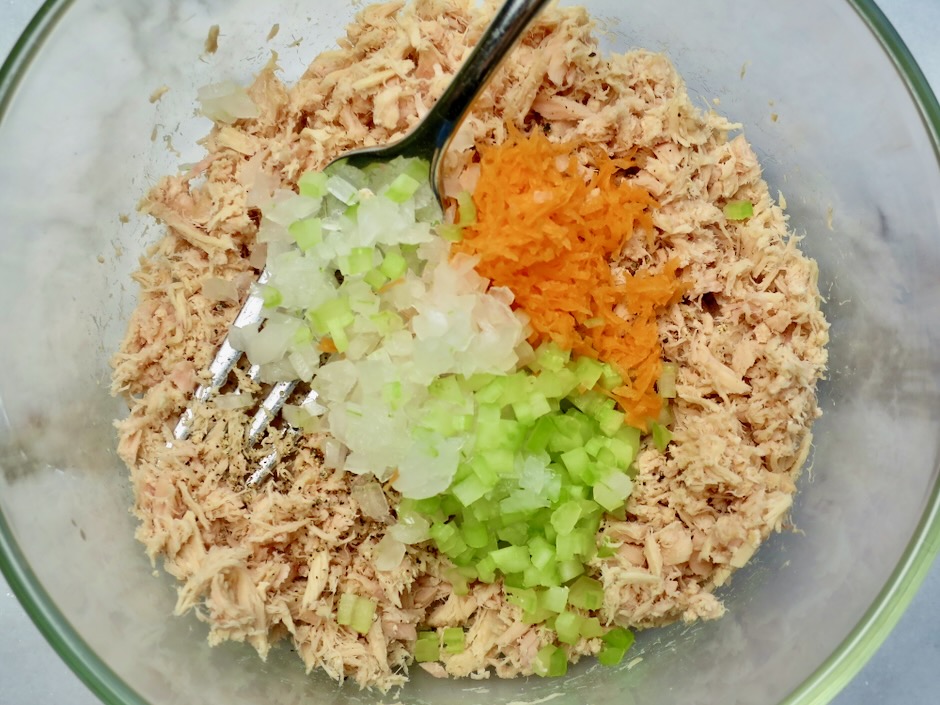
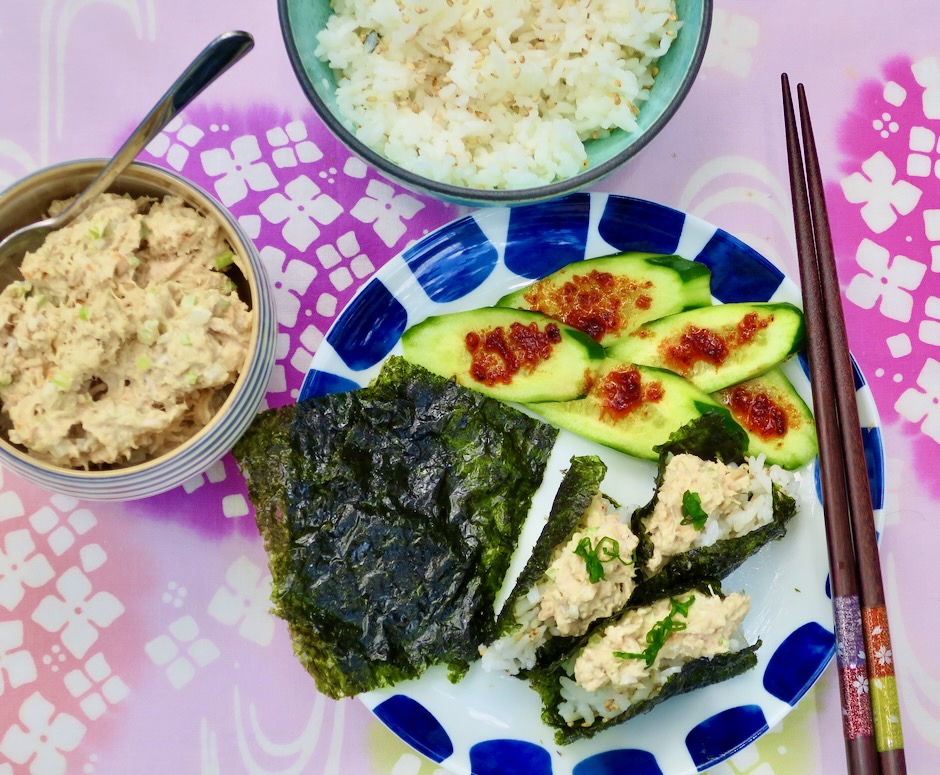
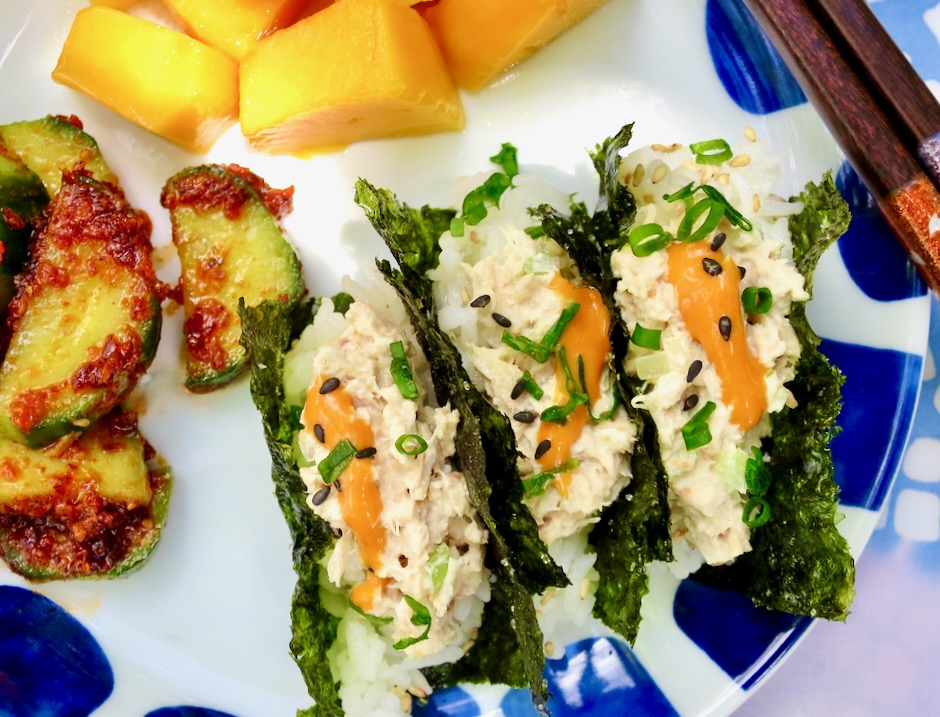


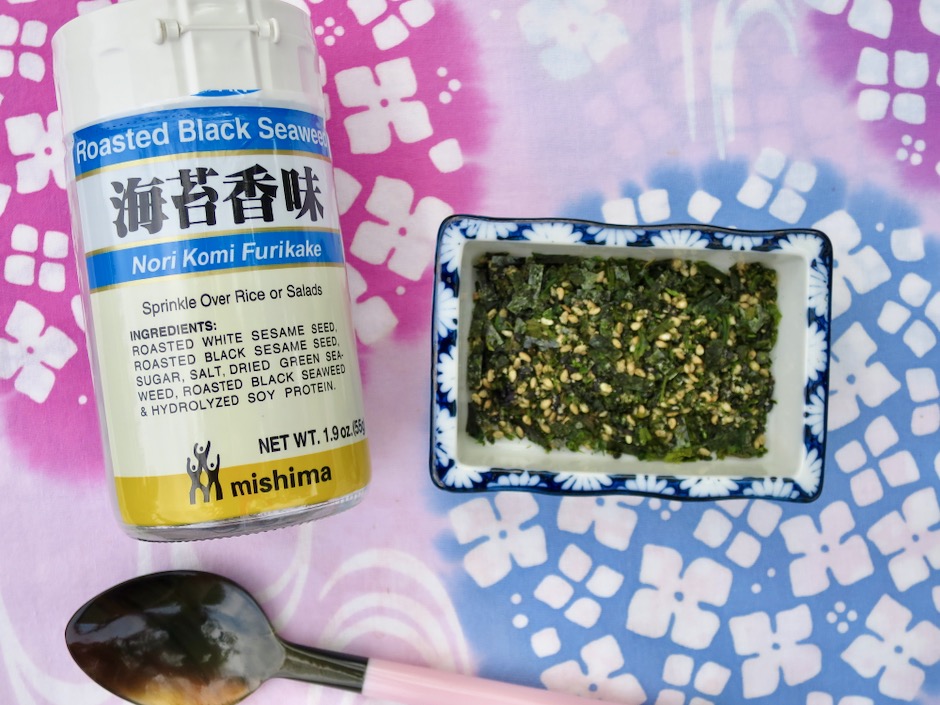
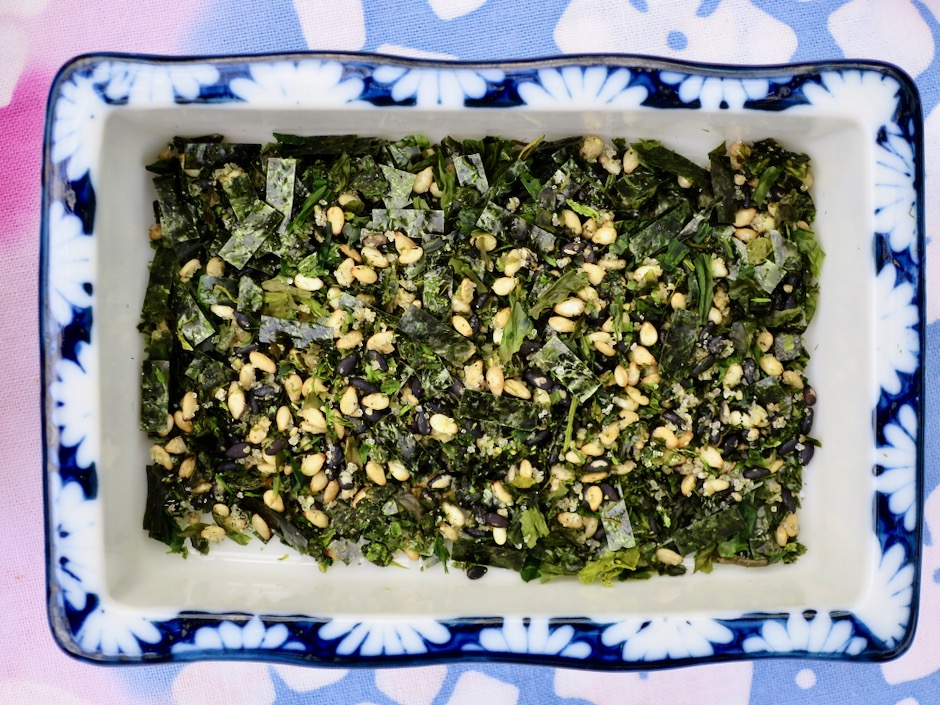
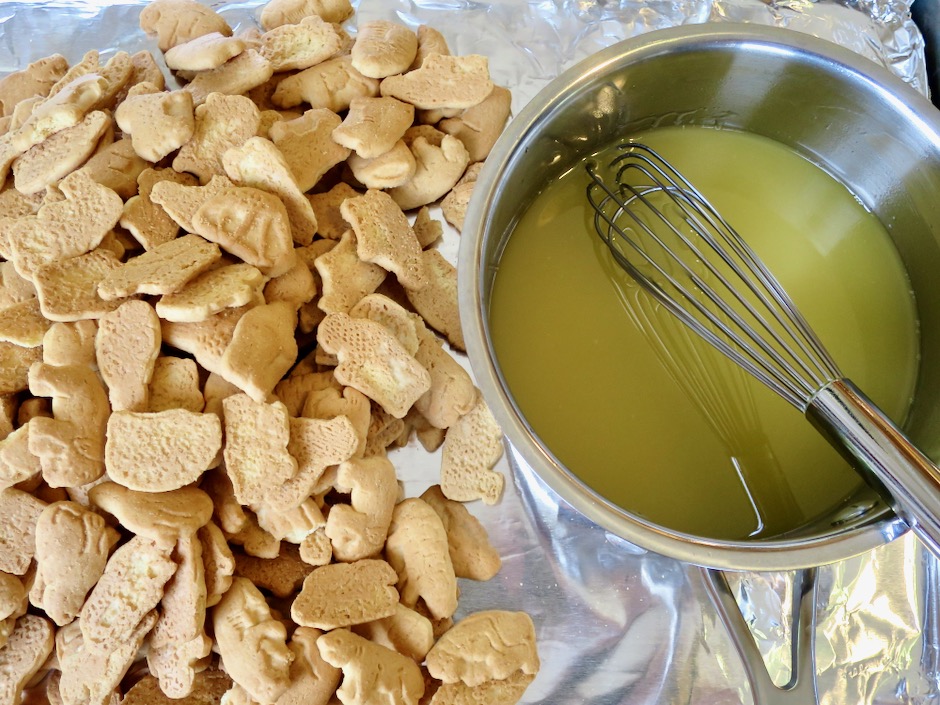
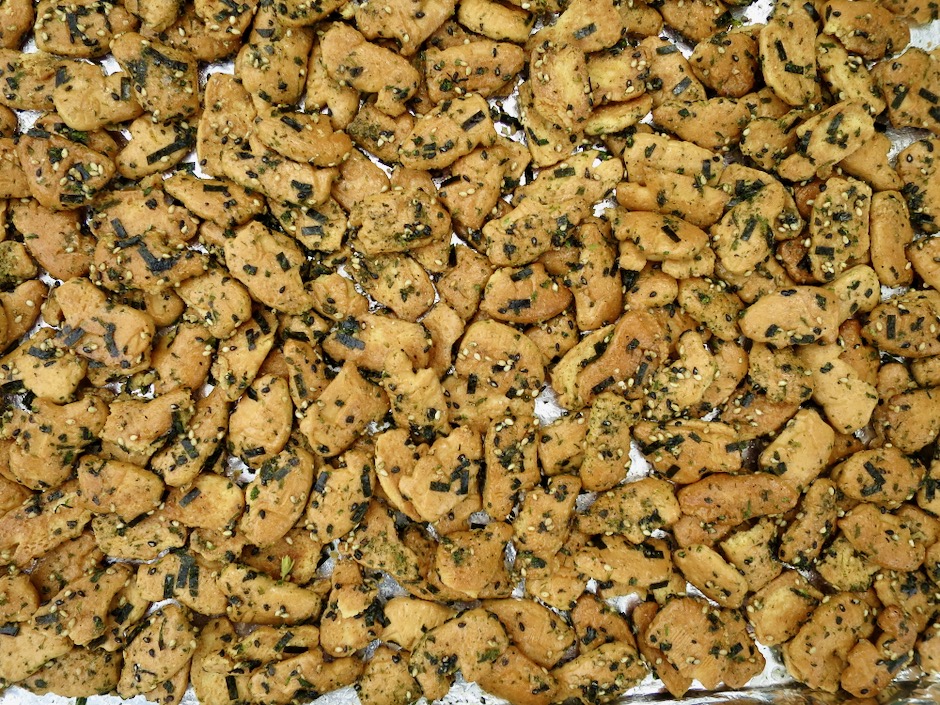
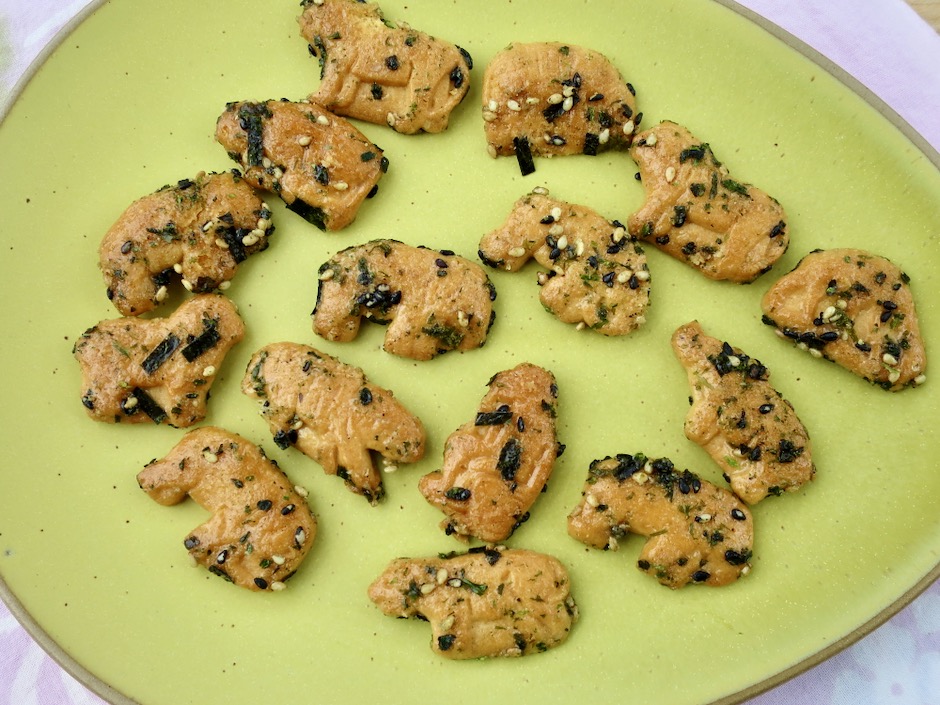
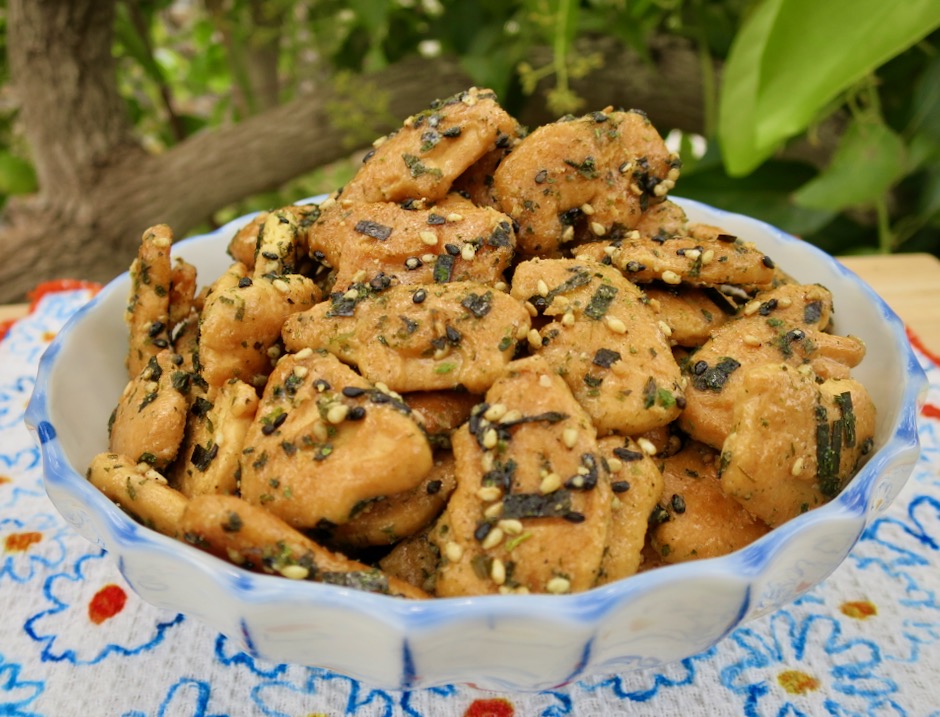
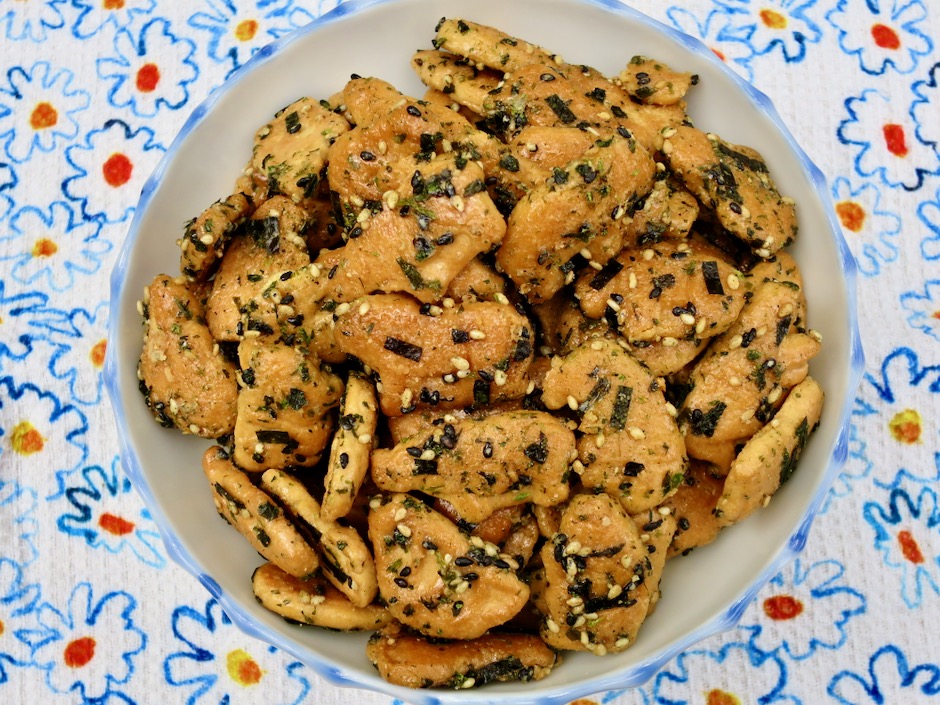
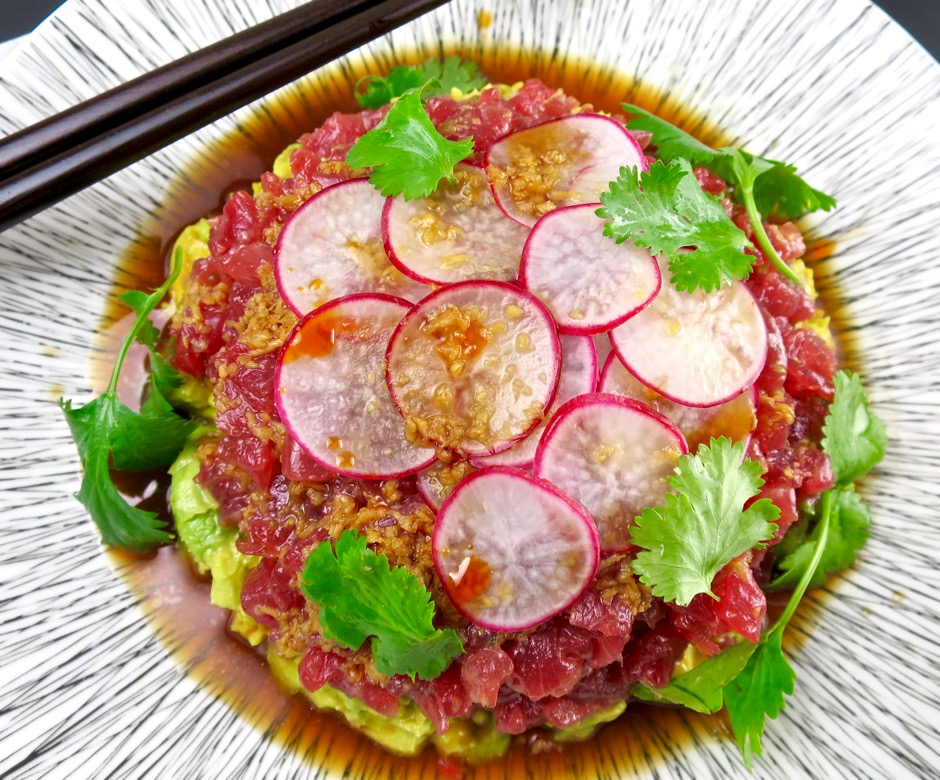
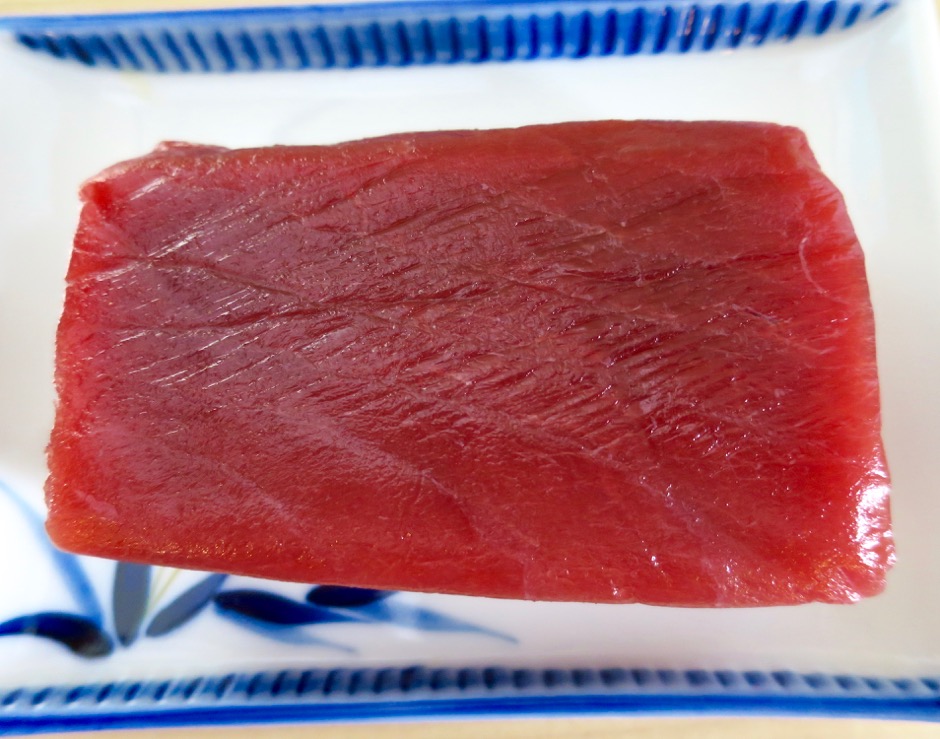
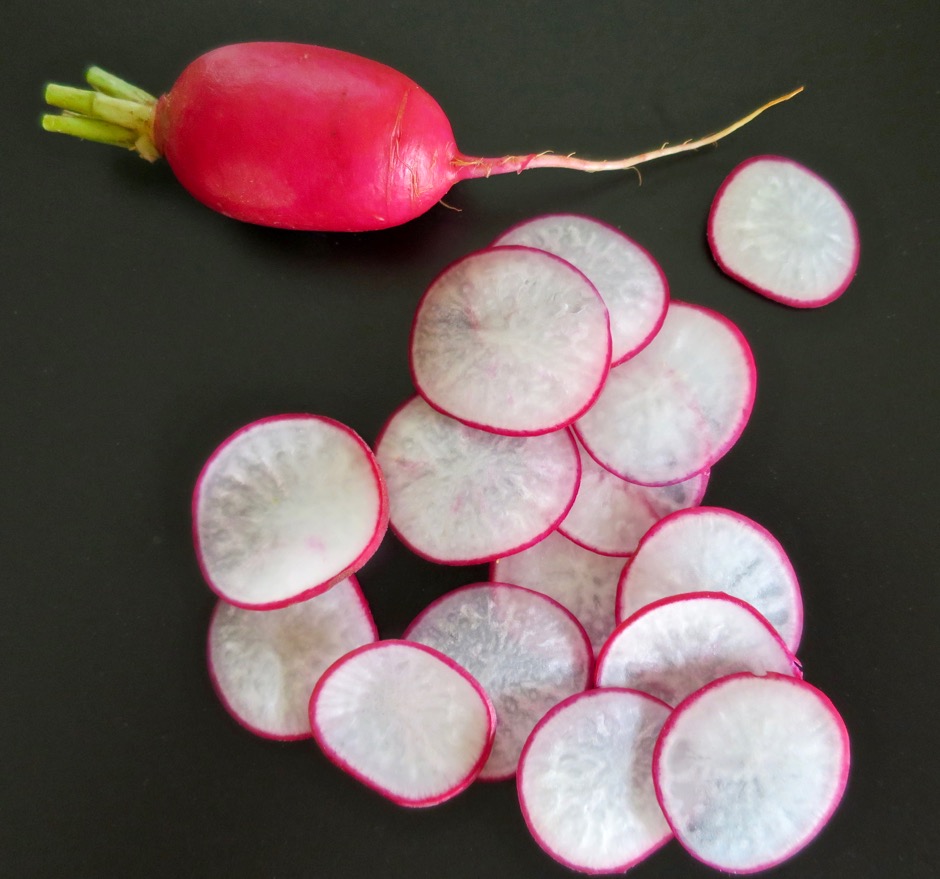
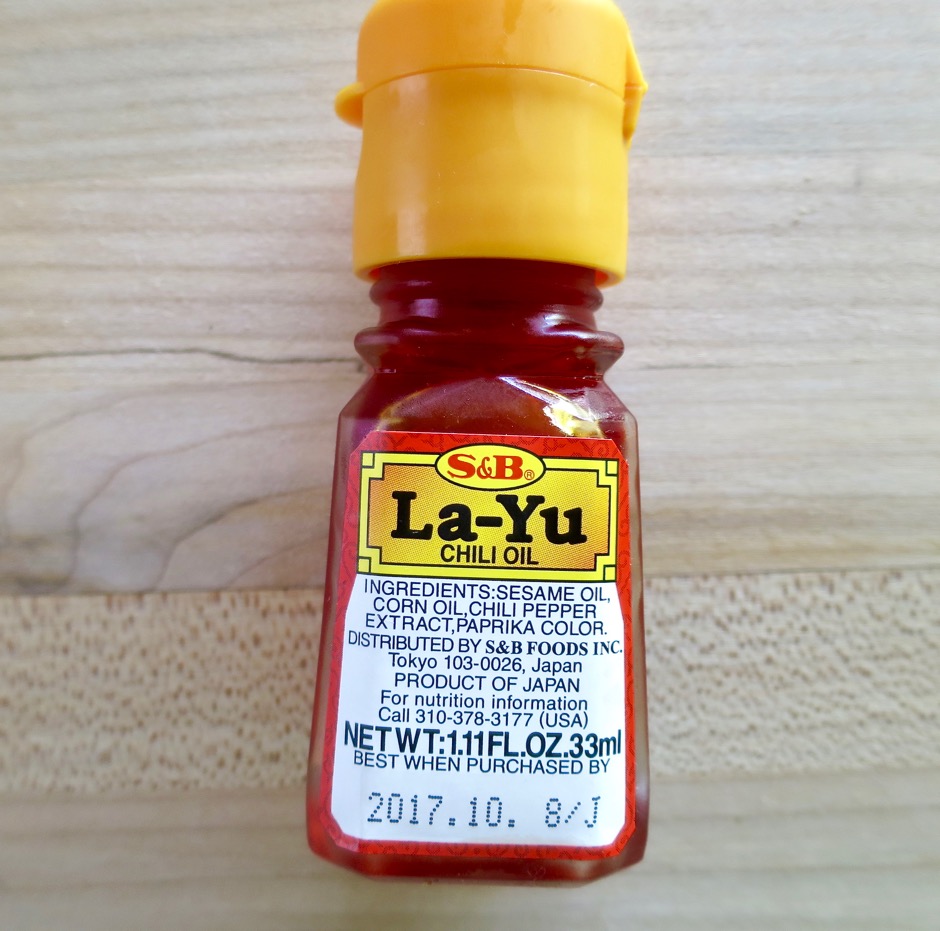
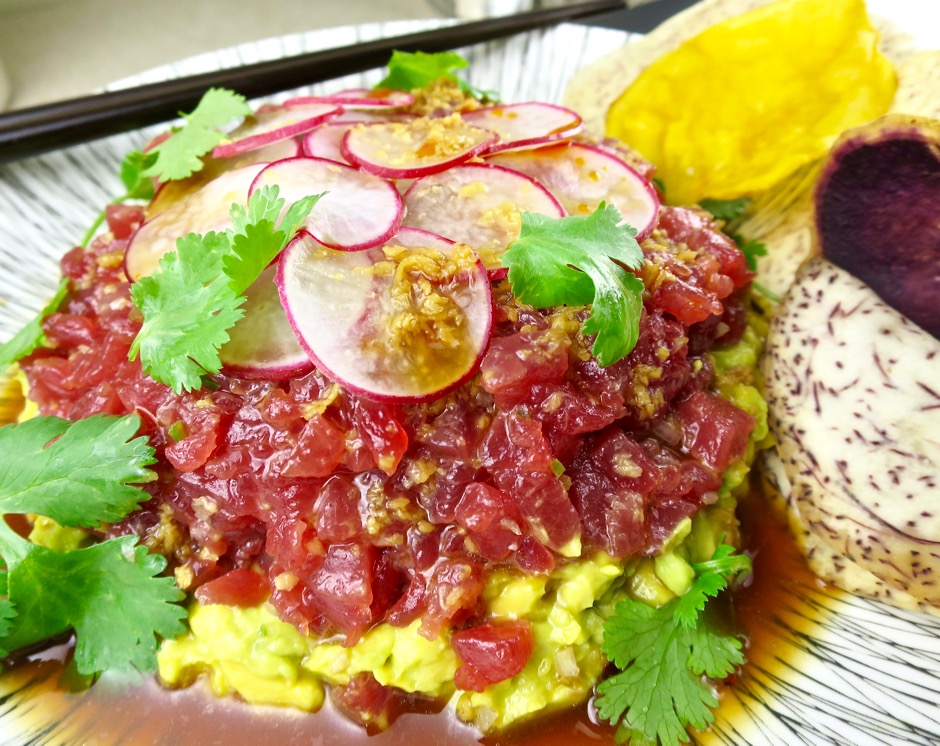
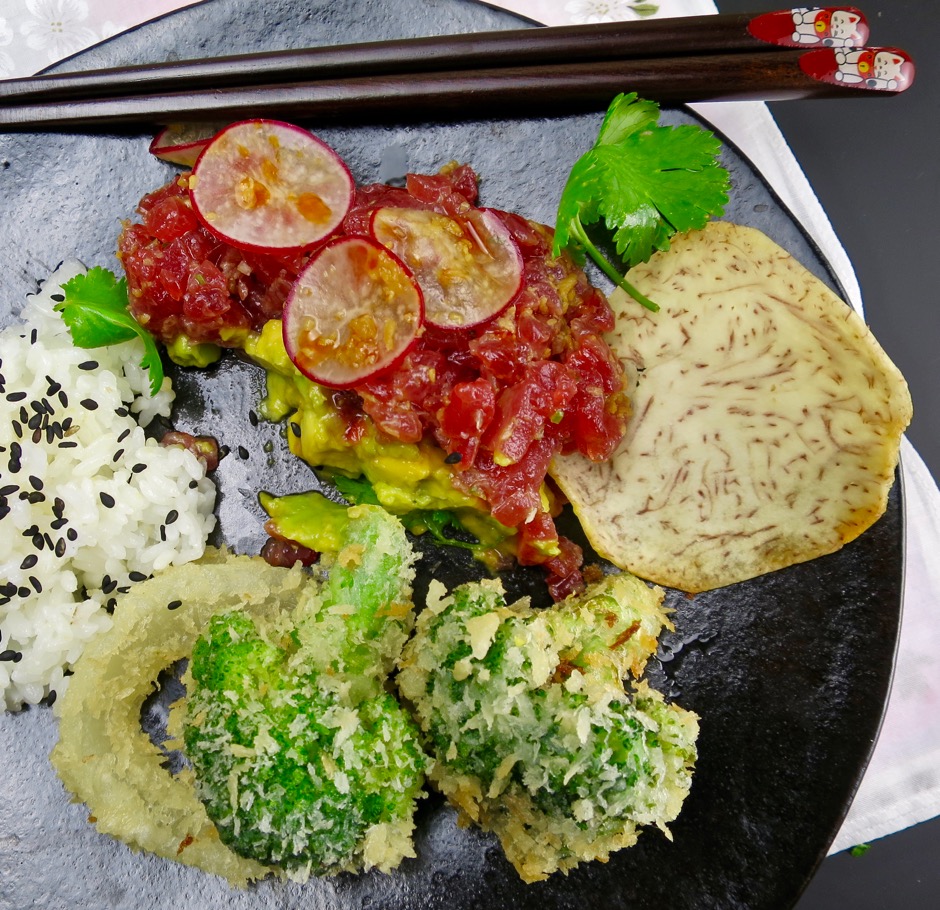
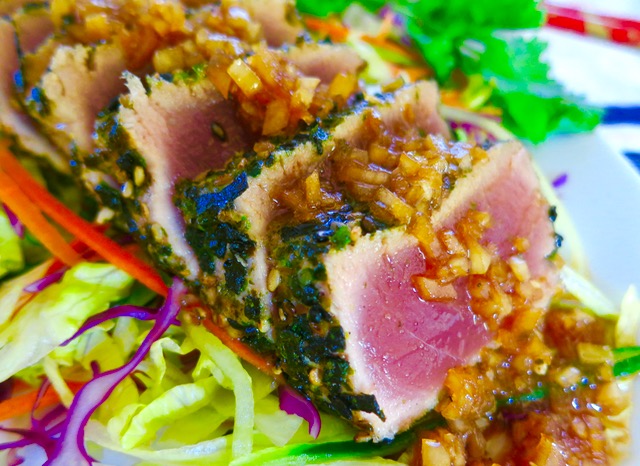 This is one of the simplest and most delicious ways to prepare fresh sashimi grade ahi. The fish is coated with furikake, seared for just a few seconds on each side, and served with a flavorful dressing adapted from Nobu Matsuhisa’s original
This is one of the simplest and most delicious ways to prepare fresh sashimi grade ahi. The fish is coated with furikake, seared for just a few seconds on each side, and served with a flavorful dressing adapted from Nobu Matsuhisa’s original 